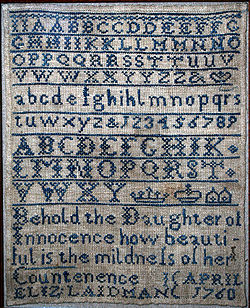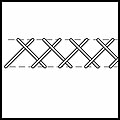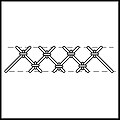


Cross stitches in embroidery, needlepoint, and other forms of needlework include a number of related stitches in which the thread is sewn in an x or + shape. Cross stitch has been called "probably the most widely used stitch of all" [1] and is part of the needlework traditions of the Balkans, Middle East, Afghanistan, Colonial America and Victorian England.













